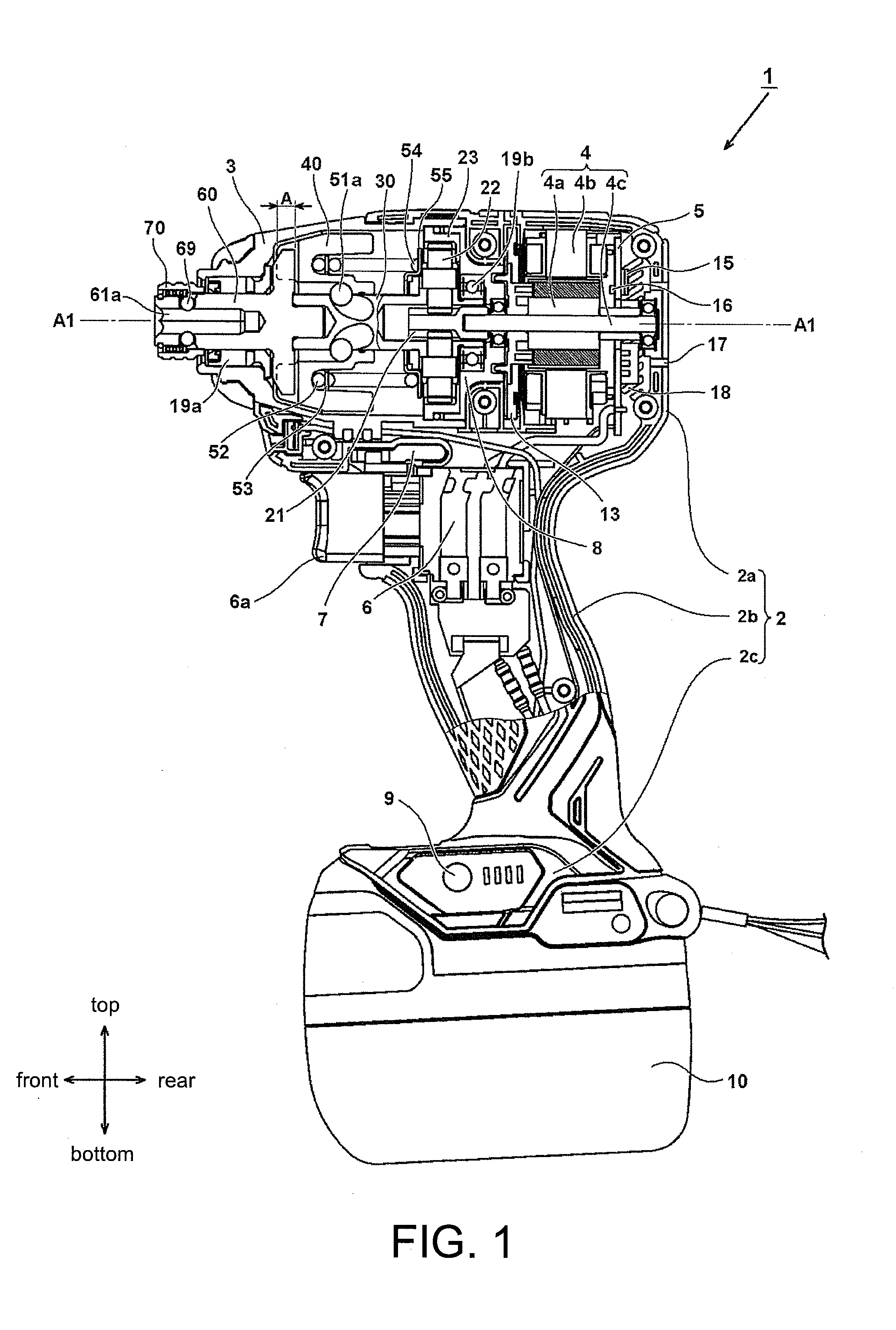Electric tool
a technology of electric tools and electric motors, applied in the field of impact-type electric tools, can solve the problems of increasing counter-torque applied to impact tools, increasing disengaging torque, and difficulty for operators to hold impact tools in one hand to fasten screws, so as to suppress the increase of disengaging torque of hammers and enhance striking force. , the effect of preventing cambered
- Summary
- Abstract
- Description
- Claims
- Application Information
AI Technical Summary
Benefits of technology
Problems solved by technology
Method used
Image
Examples
embodiment 1
[0038]Hereinafter, embodiments of the invention are described with reference to the figures. In the following description, the vertical direction and the front-rear direction refer to the directions shown in the figures. This embodiment illustrates an impact tool as an embodiment of the electric tool.
[0039]FIG. 1 is a longitudinal cross-sectional view showing the internal structure of an impact tool 1 according to an embodiment of the invention. A housing of the impact tool 1 includes a body housing 2 and a hammer case 3 disposed therein. The impact tool 1 uses a rechargeable battery 10 as a power source and a motor 4 as a driving source to drive a rotational striking mechanism. A rotational force and a striking force from the striking mechanism are applied to an anvil 60 that serves as an output shaft, and the rotational striking force is continuously or intermittently transmitted to a tip tool (not shown), such as a driver bit, held in a mounting hole 61a formed on a bit holding p...
embodiment 2
[0068]Next, the second embodiment of the invention is described with reference to FIG. 12 to FIG. 22. The hammer 40 described in the first embodiment includes three striking claws. However, the method of carrying out the “one-skip striking” as described in the first embodiment is also applicable to the structure of the conventional impact tool, in which the anvil has two blade parts and the hammer has two striking claws, and the striking claws and the blade parts are respectively at positions separated by an angle of 180 degrees. FIG. 12 is a longitudinal cross-sectional view showing the internal structure of an impact tool 101 according to the second embodiment of the invention. The impact tool 101 has the same basic structure as the impact tool 1 of FIG. 1, except that the number of the claws of the hammer and the number of the blade parts of the anvil are both two.
[0069]The impact tool 101 uses a battery 110 as a power source and a brushless type motor 104 as a driving source to ...
PUM
 Login to View More
Login to View More Abstract
Description
Claims
Application Information
 Login to View More
Login to View More - R&D
- Intellectual Property
- Life Sciences
- Materials
- Tech Scout
- Unparalleled Data Quality
- Higher Quality Content
- 60% Fewer Hallucinations
Browse by: Latest US Patents, China's latest patents, Technical Efficacy Thesaurus, Application Domain, Technology Topic, Popular Technical Reports.
© 2025 PatSnap. All rights reserved.Legal|Privacy policy|Modern Slavery Act Transparency Statement|Sitemap|About US| Contact US: help@patsnap.com



